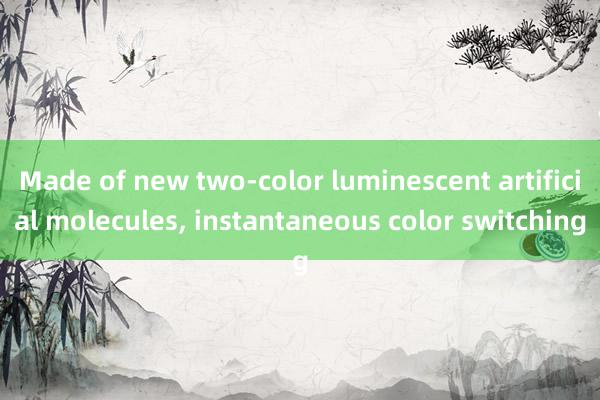
Science and Technology Daily, Beijing, August 3rd. According to a paper published in "Natural · Materials" on the 3rd, a research team from the Hebrew University of Israel has developed a "artificial molecule ”" system composed of two coupled semiconductor nanocrystals. This system can emit two different colors of light, achieving fast and instantaneous color switching. This shows that there is a huge possibility to switch colors so quickly and efficiently at the nanoscale.
From lighting, displays to fast fiber optic communication networks, color light and its tunability are the basis of many modern basic technologies. When color-emitting semiconductors are raised to the nanoscale, the quantum confinement effect comes into play: changing the size of the nanocrystals changes the color of the emitted light, thereby obtaining a bright light source covering the entire visible spectrum.
Due to the unique color tunability of nanocrystals and the ease of making and handling by scientists using wet chemistry methods, they have been widely used in high-quality commercial displays, which gives them excellent color quality and significant energy-saving properties. However, to this day, achieving each specific color still requires the use of different nanocrystals and dynamic switching between different colors cannot be performed.
The research team overcomes this limitation and creates a new type of molecule with two emission centers, where the electric field can adjust each emission center to change the color without losing brightness. Artificial molecules can cause one center of the constituent nanocrystal to emit green light while the other to emit red light. The emission of this new two-color luminescent artificial molecule is sensitive to the external voltage of the induced electric field: an electric field of one polarity induces the red center to glow, and when switching the electric field to the other, the color emission instantly switches to green and vice versa. This color conversion phenomenon is reversible and instant because it does not include the movement of any molecular structure. Just apply the appropriate voltage to the device to obtain one of the two colors, or any combination of them.
This breakthrough opens the door to the development of sensitive technologies for detecting and measuring electric fields, which can revolutionize advanced displays and help scientists create single-photon sources that can switch colors.
The most valuable thing about the new system in this article is its ability to accurately control the color adjustment of the optoelectronic equipment while maintaining its intensity. This capability brings new possibilities to various fields: including displays, lighting, nano-scale optoelectronic devices with adjustable colors, and even it can serve as a tool for tracking brain activity in neuroscience research. Its potential to actively regulate the emission color of a single photon source is also very important for future quantum communication technologies.



